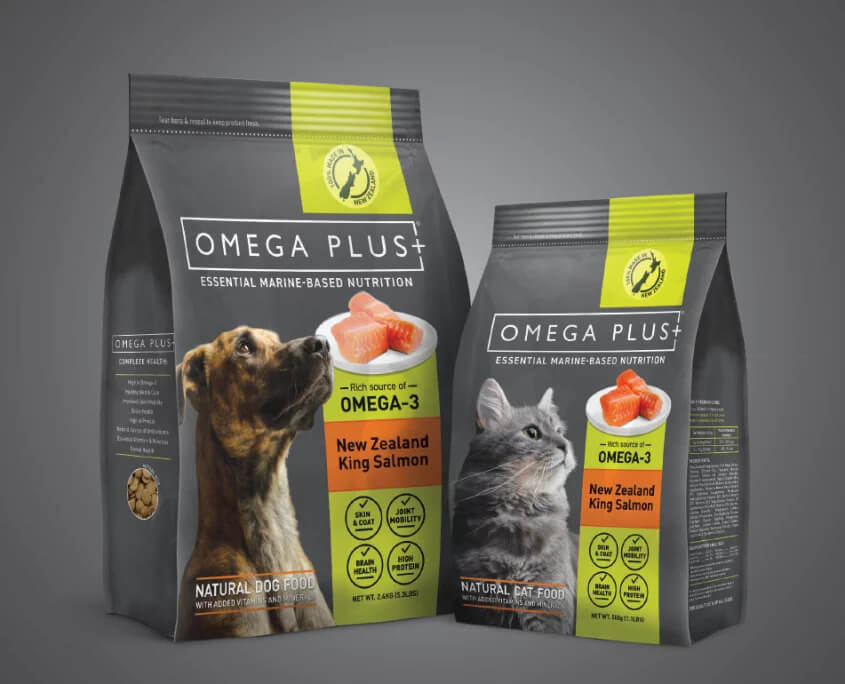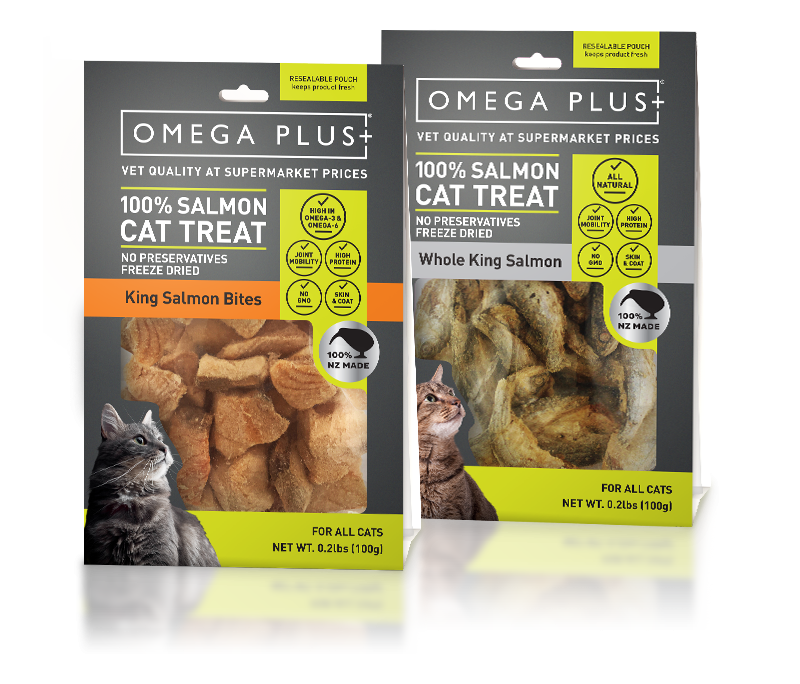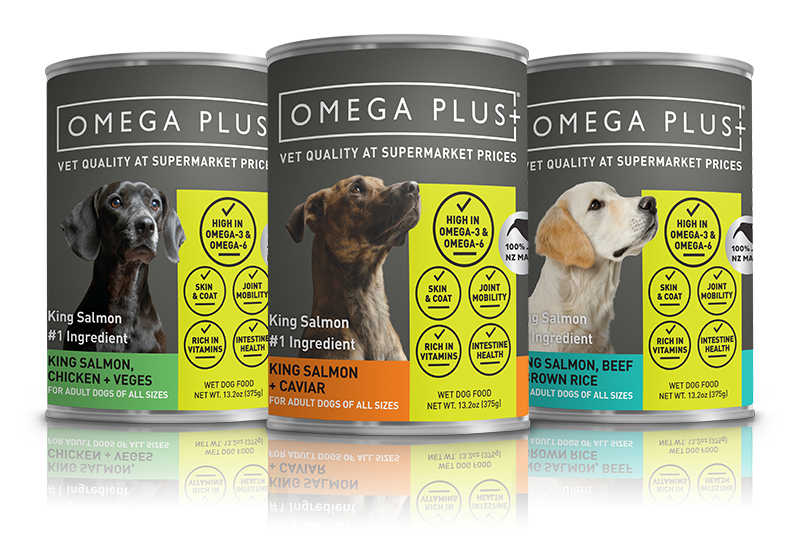Omega Plus – Launching a successful supermarket brand.

Every day new FMCG (Fast Moving Consumer Goods) packaging hits the supermarket shelves, with 80% failing in the first two years. So the question is, how do you set up your new supermarket packaging to have the best opportunity at success?
The answer — give your customer what they want.
The easiest way to find out what your ideal customer wants is to ask them. It seems simple, but it is one step that businesses often skip in their rush to get their product on the supermarket shelf. When New Zealand King Salmon approached us in 2015, they didn’t want to cut corners.


“Effective research gives you insights into your consumers’ buying habits, removes personal bias and helps you avoid making marketing blunders.”
They had an idea for a new pet food range made with real New Zealand King salmon. This FMCG product, named Omega Plus, would be a vet-quality pet food at supermarket prices. Our role was to position it to be the ‘preferred option’ available in New Zealand supermarkets. This project was very much a partnership with Omega Innovations team at New Zealand King Salmon and Downing.
We did some desktop research and supermarket visits. This was to get a snapshot of our competitors and the competitive environment we were working in.
We created many concepts, developing packaging that would have an impact on the supermarket shelf. We took our preferred prototypes and presented them to focus-groups to discover which design was the most effective. We took a qualitative approach and spoke to smaller groups of consumers to get their reactions and options. We took the prototypes of the pack designs on actual pet food bags and placed them amongst competitor brands. Focus-group participants had to rank the different brands from ‘most-preferred’ to ‘least-preferred’. Unknown to them, Omega Plus was still in the development stage, awaiting their honest judgement and feedback.
To our delight, the Omega Plus packaging designs out-performed the other, more familiar brands. One of our designers anonymously attended the focus groups. This was very valuable to gaining immediate reactions to the designs. After each focus group, we made subtle adjustments based on what we learnt, only to test again. In each consecutive focus group, Omega Plus ranked at the top — making it the ‘most preferred’ option.
Doing this kind of qualitative focus group research before launching a product gives it the best chance at success on the supermarket shelf. What you as a business owner or new product manager may like about new product packaging may be subjective. You may love the colour purple, but your target market does not. Doing effective research gives you insights into your consumers’ buying habits, removes personal bias, and helps you avoid making marketing blunders.
Some ‘Shoot from the Hip’ Tips
Setting yourself up to create a successful brand takes a lot of hard work and clever thinking, and packaging design is an important piece of the puzzle.
Here are some of the things that we have learnt:
- Do your research well and gain customer insights before you create and launch your brand and prepare to adapt quickly to these insights. Have a clear idea of your ideal customer and what problem you are solving for them. How are you making their lives better?
- Understand your brand as if it was a person. What is its personality? How does it speak? How does it act? How will customers feel after connecting with the brand? This helps to create brands with depth and leads to creating authentic pack design.
- Have a clear selling proposition that is appealing, credible, and easy to communicate on the packaging. If this clearly shown on the pack it will help your product sell itself.
- Invest in outstanding design that will put you ahead of the competition from the start. An investment in good quality design will add immense value to what profit you can make from your brand in the long run.
- Carefully select the materials you are using as packaging, they have more impact than you might realise. How do they feel to touch? What impact do they have on the environment? What do they say about the quality of your product? Do they have visual appeal on the shelf and in the home?
- Before you commit to printing large quantities, test all packaging materials for how they perform in the manufacturing, distribution, shelf, and storage environments.
- Test your prototypes in the place where they will sell for stand-out appeal.
- Have all your compliance and essential info that must appear on the pack done well ahead of production.
- Allow long lead-in times for the production of packaging as this can take longer than you think.
- Expect that you will need to make alterations to your artwork for your second print run as most new products need to adjust the packaging artwork in some way when it’s time to reprint it.

